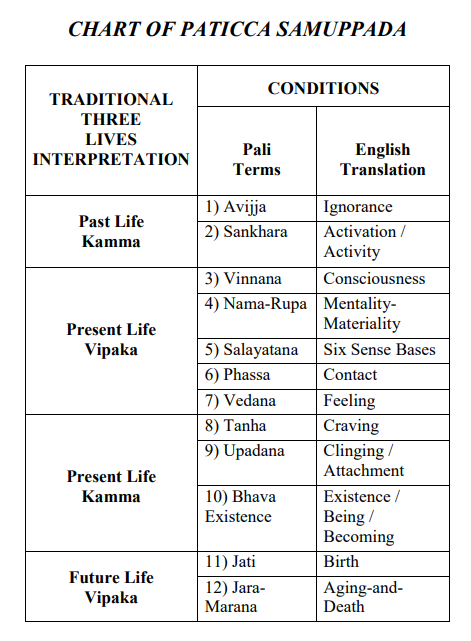It is obvious that Paticcasamuppada links in Maha Nidana Sutta are less in compare with ubiquitous Paticcasamuppada in Nidana SN.
But the difference in between SN Suttas and DN Maha Nidana Sutta is target audience and initiative question.
- The questionnaire of Maha Nidana Sutta is Monk Ananda and it is very doubtful that first council answerer Ananda did manipulate or invente Maha Nidana Sutta by his own.
- By the time of questioning about Paticcasamuppada by Ananda, the venerable Ananda was Sottapanna level.
- The main question about Maha Nidana Sutta is
"It's amazing, lord, it's astounding, how deep this dependent co-arising is, and how deep its appearance, and yet to me it seems as clear as clear can be (it seems very easy to understand for me)."
and not asking
Lord, please teach me Paticcasamuppada
- The Sakkara Samjna (the idea of self) does not happen at all in one mind of Sottapanna level. Wikipedia said
A sotāpanna doesn't actually have a view about self (sakkāya-ditthi)
Instead sotapanna person has Samma Ditthi which is deeply discoursed by Sariputta in MN 9: Sammaditthi Sutta. In this sutta,
Saying, “Good, friend,” the bhikkhus delighted and rejoiced in the venerable Sāriputta’s words. Then they asked him a further question: “But, friend, might there be another way in which a noble disciple is one of right view…and has arrived at this true Dhamma?”—“There might be, friends.
“When, friends, a noble disciple understands the sixfold base, the origin of the sixfold base, the cessation of the sixfold base, and the way leading to the cessation of the sixfold base, in that way he is one of right view…and has arrived at this true Dhamma.
“And what is the sixfold base, what is the origin of the sixfold base, what is the cessation of the sixfold base, what is the way leading to the cessation of the sixfold base? There are these six bases: the eye-base, the ear-base, the nose-base, the tongue-base, the body-base, the mind-base. With the arising of mentality-materiality there is the arising of the sixfold base. With the cessation of mentality-materiality there is the cessation of the sixfold base. The way leading to the cessation of the sixfold base is just this Noble Eightfold Path; that is, right view…right concentration.
“When a noble disciple has thus understood the sixfold base, the origin of the sixfold base, the cessation of the sixfold base, and the way leading to the cessation of the sixfold base…he here and now makes an end of suffering. In that way too a noble disciple is one of right view…and has arrived at this true Dhamma.”
Gautama Buddha did not include Six bases in Maha Nidama Sutta because Venerable Ananda was already Sotapanna person and he had no self view on all six bases. And Gautama Buddha did not totally exclude six bases in this Sutta. When Gautama Buddha explained Phasa section, it said
"'From contact as a requisite condition comes feeling.' Thus it has been said. And this is the way to understand how from contact as a requisite condition comes feeling. If there were no contact at all, in any way, of anything anywhere — i.e., contact at the eye, contact at the ear, contact at the nose, contact at the tongue, contact at the body, or contact at the intellect — in the utter absence of contact, from the cessation of contact, would feeling be discerned?"
"No, lord."
"Thus this is a cause, this is a reason, this is an origination, this is a requisite condition for feeling, i.e., contact.
This means six bases is a bridge between Contact(Phasa) and Nama-Rupa(Material-Mental). Five bases of Rupa (Material POCs) and one base for Nama (Metal POC) is indirectly discoursed in Maha Nidana Sutta.
The logical assumption about not discussing six bases in link was Ananda probably had well understanding on six bases by Samma Ditthi (without self-view, Sakkara Ditthi). On his question Paticcasamuppada was easy to understand we can deduce that Venerable Ananda had Vijja and got rid of Avijja since he first joined Sanga. So Gautama Buddha did discourse without discussing Avijja as well as Sankhara (which is closely related with Avijja).
In conclusion, Maha Nidana Sutta is highly tailored to Venerable Ananda who was already sotapanna person so it is safe to exclude Avijja (Ignorance), Sankhara (fabrication, formation, Constructing activities) and six bases.
But for the normal, ubiquitous and common causes and effects links should include six bases and mainly Avijja and Sankhara as well. I do not know how much extent Sotapanna person would understand the causes and effects of Avijja, Sankhara and six bases but here in Maha Nidana Sutta, Gautama Buddha discussed only 9 causes and effects probably because of Venerable Ananda understanding on 3 missing links and based on this understanding he thought Paticcasamuppada was so easy for him.
